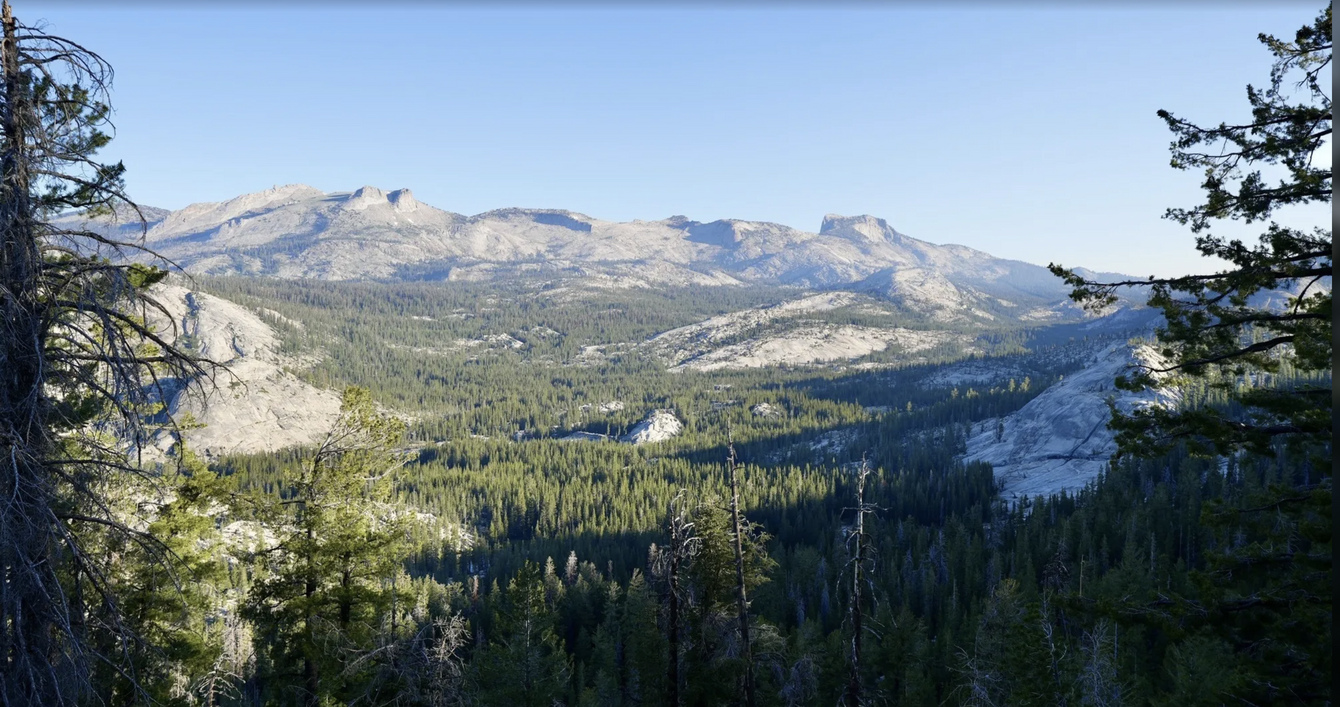
Questions and Answers
Your questions answered on Mysterious Disappearances and Deaths in the Wilderness
How is Forensic genealogy helping on wilderness disappearance cold cases?
How is DNA used to identify human remains found in the backcountry?
Months or years after someone goes missing hiking or walking outdoors, human remains can be discovered, even if areas previously thoroughly searched. The question often remains - to whom do the remains belong? The challenge is especially significant if the remains are badly degraded, bones are the only clue, and there are no teeth or dental records.
What is DNA forensics, and how is a DNA fingerprint created?
Our DNA is a genetic code made up of 4 letters (A, T, G, C), called DNA bases, that are interpreted by our cells to make the molecules and structures that allow the human body to operate, Regions of DNA that encode molecules known as “proteins” are called genes. The unique code in every person results in physical differences, e.g. hair and eye color, and height, between different people.
The vast majority of DNA (99.9% on average) between two individual humans is the same, but the 0.1% is the key to identifying us.
Forensic laboratories look at 20 DNA regions that vary between individuals, called short tandem repeats (STRs), to create a DNA “fingerprint”. These STRs are located in stretches of DNA between gene-coding regions and consist of short DNA sequences that are repeated different numbers of times in other people. The number of repeats at each of these STRs means the probability can be calculated that the DNA from a body sample can be matched to a specific person. The chance that two people who aren’t closely related have the same DNA profile is tiny, i.e. 1 in billions.
Forensic DNA typing can identify biological samples if sufficient DNA can be recovered, even when the human remains are fragmented and the DNA is degraded. Identifications are made by comparing the DNA profile of reference samples with those from the human remains.
The acquisition of DNA from skeletal remains can be a delicate process. Extraction of total genomic DNA from nearly any skeletal element is possible with improved extraction buffers that provide complete demineralization of the bone material.
A tissue, bone, or blood sample is sent to a testing facility. In the United States, the University of Texas Health Science Center conducts the analysis :
Two types of DNA profiling can be used on a body that has been dead for a while:
Autosomal DNA Profiling (DNA Fingerprinting) usually refers to testing STR (short tandem repeat) markers found in Autosomal DNA. STRs are short fragments of DNA, usually 2 to 6 base pairs in length, repeated repeatedly in a defined location of the autosomal DNA. This helps identify unique characteristics, e.g. eye color.
Mitochondrial DNA profile. The analysis of mitochondrial DNA (mtDNA) fills a niche in forensic genetics since it is superior to standard nuclear DNA (nDNA) typing when samples have to be identified that do not contain enough nDNA or need to be evaluated concerning their maternal relatedness. Since mtDNA is only passed from mother to child, all siblings share the same amount of this DNA.
Next-generation sequencing (NGS) sequences or reads through many small fragments of DNA simultaneously, giving results much more quickly and at a lower cost than older methods. As a result, the number of regions used in STR analysis increased from 13 to 20 in 2017, increasing the accuracy of DNA testing.
Methods to analyze samples with mixed DNA samples have also been developed. Sophisticated software uses probabilistic genotype matching to determine the chances that two samples came from the same person. A likelihood ratio is calculated, which measures how much more likely someone matches the sample than someone randomly from the general population.
These analyses are then uploaded to a database, e.g. CODIS or NamUS in the US. In December 2018, the commencement of the Criminal Justice (Forensic Evidence and DNA Database System) Act 2014 in the U.K. meant that forensic evidence, such as DNA profiles and fingerprints, could be exchanged and compared with databases in other European Union Member States.
U.S. DNA databases
The Combined DNA Index System (CODIS) is a tool for linking DNA to violent crimes. It enables federal, state, and local forensic laboratories to exchange and compare DNA profiles electronically, linking serial violent crimes to each other and known offenders.
The National Missing and Unidentified Persons System (NamUs) is a national clearinghouse and resource center for missing, unidentified, and unclaimed person cases throughout the United States. They are funded and administered by the National Institute of Justice through a cooperative agreement with the University of North Texas Health Science Center for Human Identification. All NamUs resources are provided to law enforcement, medical examiners, coroners, allied forensic professionals, and family members of missing persons.
Exclusive articles for members of StrangeOutdoors that are not available elsewhere on the site.
What are good books and audiobooks on missing people in the great outdoors?
Here are a few books and audiobooks which cover missing persons’ disappearances, predominantly in the US and Canada. Please get in touch with this site if you have any other suggestions - contact us.
The Cold Vanish by Jon Billman, Book and Audiobook 11 hours 36 minutes, read by Stephen Graybill.
The Cold Vanish covers in detail the case of touring cyclist Jacob Gray, who disappeared in the northern district of Olympic National Park near the Sol Duc River in Washington in 2017. Jon spent time with Randy Gray, Jacob’s father, who was tireless in searching. Jacob’s body was found in August 2018, someway from where he disappeared, despite heavy snow.
Read a summary of Jacob’s disappearance here: The strange cycling death of Jacob Gray
The book also covers other disappearances, David Paulides and his Missing 411 books, which he is mildly critical of after meeting with him, and quirky stories like that of Troy Knapp, aka “Mountain Man.”
StrangeOutdoors Verdict:
The Cold Vanish is entertaining, well-written, and a good read for unexplained disappearances. The only criticism is that too much time was spent on the Jacob Gray case when there have been many other disappearances. For example, the bizarre case of Carl Landers on Mount Shasta is mentioned, but the book doesn’t go into detail.
Members can read the Carl Landers story here: The mysterious disappearance of Carl Landers from Mount Shasta
The Last Season by Eric Blehm, Audiobook 12 hours 34 mins, read by Jonathan Davis
The Last Season covers the story of Randy Morgenson, 64, who was midway through his 28th season as a backcountry ranger at Sequoia & Kings Canyon National Parks and was the most senior ranger in the High Sierra with unparalleled experience of the wilderness. On July 21, 1996, he left a note on his tent (the date he'd written was June 21st even though it was July) to say he would be away for two or three days, and then he left his station near Bench Lake, leaving his Smith & Wesson .357 Magnum behind. Randy was never seen alive again.
In July 2001, five years after the search for Randy was called off, a trail worker found some new evidence near a creek in a gorge in the Window Peak drainage, near the outermost borders of the search area, below the pools of a waterfall. Rangers soon discovered a tattered shirt with Morgenson's badge. Then, a backpack with the buckle fastened and a boot.
Read the story about Randy Morgenson at: Randy Morgenson - Disturbing deaths in U.S. national parks
Strangeoutdoors.Com verdict:
The book is an insightful examination of the life of a park ranger and also covers the fascinating story of Randy’s disappearance and the discovery of remains. The exact cause of his death remains a mystery—and great narration on the audiobook by Jonathan Davis.
Missing 411 by David Paulides Books
David Paulides has written a series of books, Missing 411, e.g. Missing 411 Western United States & Canada, and on bigfoot or Sasquatch phenomena.
The Missing 411 books contain a factual account of missing people that Paulides has identified from media reports - where, the circumstances and whether they fit a cluster. His books focus on the United States and Canada, but he has produced YouTube videos of disappearances in Australia. He has also produced three films, Missing 411 and Missing 411 - The Hunters, and Missing 411 - the UFO Connection, which are worth a watch with a somewhat sceptical mindset.
StrangeOutdoors.com verdict:
The Missing 411 books are factual, if somewhat dry, accounts of disappearances in North America. Delving further into some stories can give additional facts or a better interpretation. But it remains the best resource out there for lovers of missing people stories. Potential purchasers of his books must note that they can only be obtained from Paulides’ website for $25.99 per book, as they have been self-published. Some re-sellers list his books on Amazon for exorbitant amounts.
Note: Paulides has been intimidating and aggressive to many authors and website publishers, and this one is no exception with legal threats.
Exclusive articles for members of StrangeOutdoors that are not available elsewhere on the site.
See the latest Exclusive members-only articles on StrangeOutdoors.com
Read more Q&A’s on StrangeOutdoors
Weird vibes in the wilderness - what causes them?
What happens when a human body decomposes?
How is Forensic genealogy helping on wilderness disappearance cold cases?
Why are people found in the backcountry with their clothes missing?
What are good books and audiobooks on missing people in the great outdoors?





